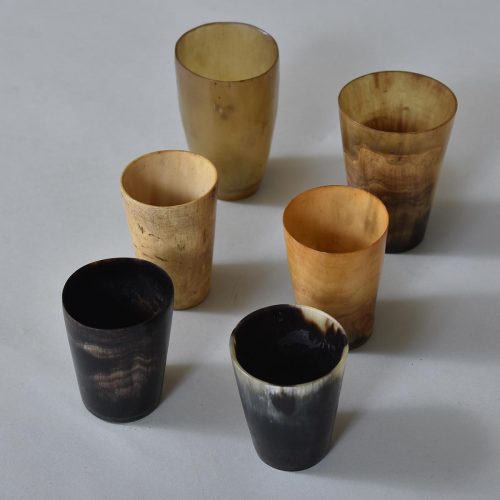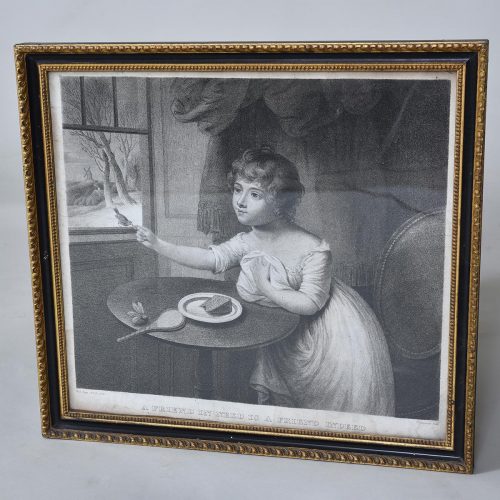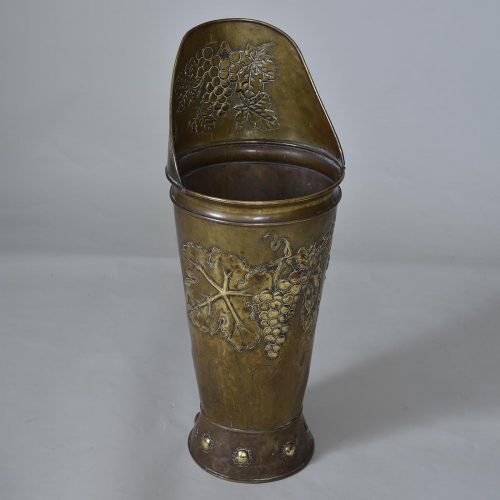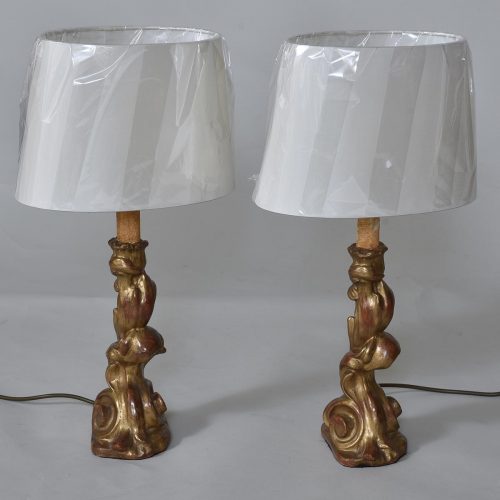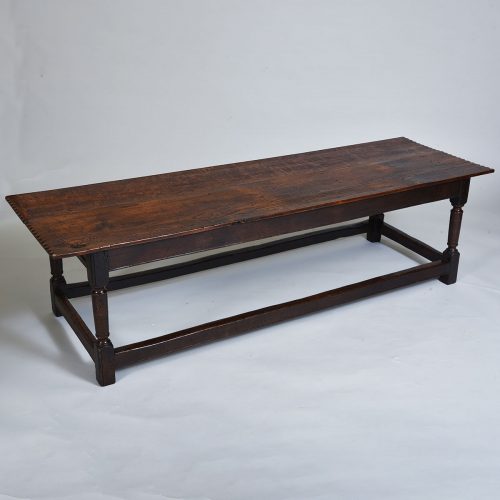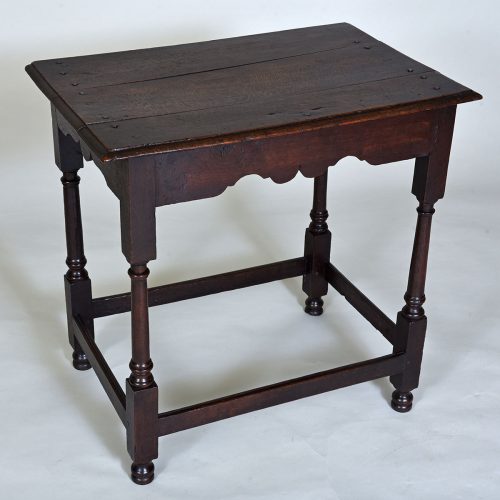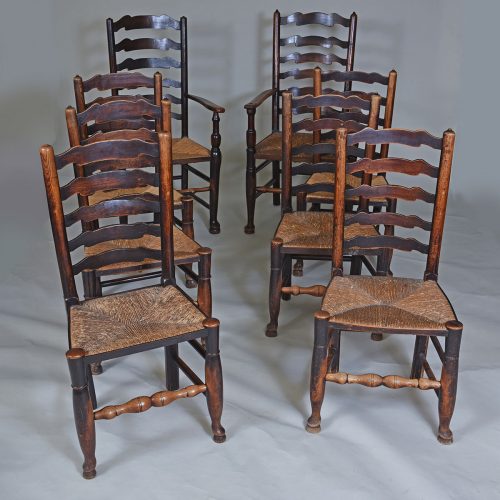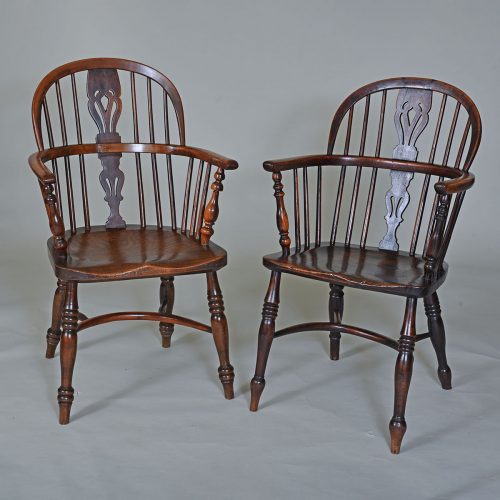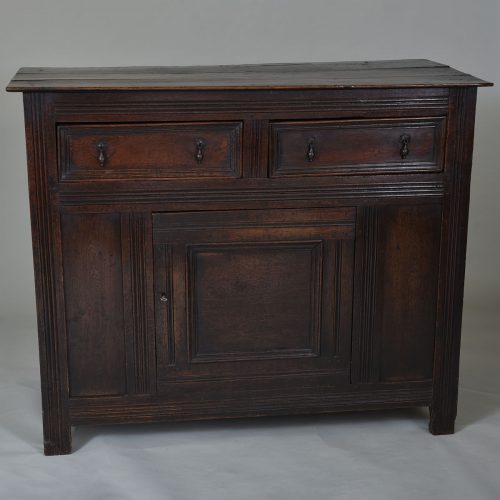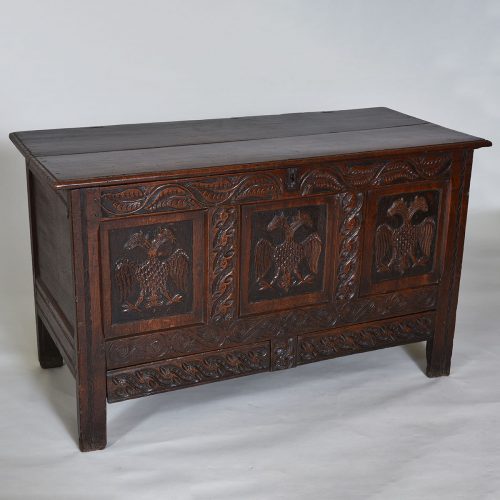Current Stock
-
.SOLDCollection of Six Small Horn Beakers Height: 2.5" / 7 cms and 3.5" / 9 cms
-
.SOLD19th century Engraving 'A Friend in Need ….' in original frame Width: 17.5" / 44 cms Height: 16" / 41 cms
-
.SOLD19th century Brass Grape Hod - Perfect for sticks and umbrellas Height: 31" / 79 cms Width: 12" / 30 cms
-
.SOLDPair of 19th century Carved and Gilded Lamps including shades Base Width: 5" / 13 cms Height Inc Shades: 22" / 56 cms
-
.SOLD19th century Low Stool Width: 11.5" / 29 cms Height: 13" / 33 cms
-
.SOLDLow Oak table constructed of 18th century Oak. Perfect as a coffee table Width: 68" / 173 cms Depth: 20.5" / 52 cms Height: 18" / 46 cms
-
.SOLDEarly 18th century Oak Centre Table with shaped frieze, turned legs united by straight stretchers. Three plank top with moulded edge. English Width: 29" / 74 cms Depth: 19" 48 cms Height: 28" / 71 cms
-
.SOLDMatched set of 8 ladderback dining chairs. Circa 1790. Lancashire. Rush seats with guard rails. 2 arm chairs and 6 single chairs
-
.SOLDYew Windsor Chair - Elm Seat - circa 1840 - Nottinghamshire Area - crinoline stretcher - good colour and patina Seat Height: 17" / 43 cms Back - Total Height: 36" / 92 cms
-
.SOLDAntique Yew Wood Windsor Chairs - Four available - circa 1840 - Nottinghamshire Seat Height: 16.5/17" / 42/44 cms Total Height: 36" / 92 cms
-
.SOLD17th century Oak Cupboard. Probably Westmoreland. Circa 1660. Lovely colour and patination Width: 53.5" / 136 cms Depth: 25" / 63 cms Height: 43" / 110 cms
-
.SOLDRare 17th century Oak Coffer with Blind Drawers - Salisbury Width: 53" / 135 cms Depth: 22" / 56 cms Height: 31" / 79 cms
17th century Oak Coffer with Two Drawers – Possibly carved by the workshop of Humphrey Beckham, Salisbury.
The Coat of Arms of the double headed eagle belongs to the Speke Family. The Speke Family originated from a village Quettehou near Cherbourg in Normandy, settling in England sometime after the Norman Invasion. First records were of a Richard L’Espec born 1110 living in North Devon at Wembworthy. Their estate was called Heywood (today the site of New Eggesford House) Walter Espec (died 1153) was Sheriff of Yorkshire and feudal baron of Helmsley in Yorkshire, built Helmsley Castle, Wark Castle and founded Kirkham Priory and Rievaulx Abbey. Sir John Speke (1442–1518) of Whitelackington, Somerset, was Sheriff of Devon in 1517 and a Member of Parliament (1477) He was knighted in 1501. His monument is the Speke Chantry in Exeter Cathedral in which survives his recumbent effigy. Sir George Speke (1530-1584) had ties to North Yorkshire – he married Elizabeth Luttrell, widow of Richard Mallet of Currypool, the daughter of Sir Andrew Luttrell (1484–1538), feudal baron of Dunster, of Dunster Castle in Somerset, Sheriff of Somerset and Dorset in 1528 by his wife Margaret Wyndham (d.1580), a daughter of Sir Thomas Wyndham (d.1521) of Felbrigg Hall, Norfolk, by his first wife Eleanor Scrope, daughter and heiress of Richard Scrope of Upsall Castle, Yorkshire. By Elizabeth he had a son and two daughters. George Speke (1623-1689) was a supporter of Prince Rupert at Bridgewater. When the town surrendered to Thomas Fairfax in July 1645 he was taken as a hostage and sent to the Tower of London to the Gatehouse Prison. He was released on payment of the sum of £2390 in 1646. From 1661–1662 he served as High Sheriff of Somerset until, in August 1679, he was elected M.P. for Somerset. The precise date of this coffer is difficult to establish. The top rail is carved with leaves depicted in a naturalistic way and is almost identical to that found on the frieze of a table dated circa 1675 - illustrated in Anthony Wells-Cole’s article from the Furniture History Volume XII 1976 Fig 10c Oak Furniture in Dorset. The carving of the double headed eagle on the front three panels is similar to that which can be found on an armchair on the front cover of ‘Oak Furniture – The British Tradition’ by Victor Chinnery – This chair was carved by Humphrey Beckham (1588-1671) and dated 1622 – the back panel bearing the arms of the City of New Sarum (Salisbury) which includes the double headed eagle. It is known that carvers from the workshop in Salisbury crossed the borders to Dorset to work at Chantmarle House– see above. The deep carving to the two drawer fronts is similar to that found on a joined stool with drawer circa 1630 (Page 229 Fig 3:113 Salisbury. A joint stool (dated circa 1630) with a carved frieze rail of scrolling forms Page 152 Fig.2:215 bears a resemblance to the carved rail below the three panelled front. The hinges are a later replacement.


